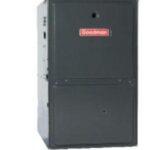Choosing a new furnace can be tricky, especially for new or inexperienced furnace shoppers. There are so many important selling points advertised and emphasized by various furnace providers, and at times it’s difficult to know what to focus on. Luckily, the most important features of a good furnace can be condensed into a few simple comparative shopping steps. With the right know-how, even a first-time furnace buyer can get the best heating unit for his or her individual needs.
Step 1: Compare the average operating costs of oil, natural gas and electric furnaces in your area. Costs vary greatly from region to region, so you’ll need to call your local energy supplier to see what is available in your area and what the cost of these utility services are. Additionally, factor in utility installation costs; sometimes it can be very pricey to install a new utility line if your home doesn’t already have the appropriate furnace hook-ups.
Step 2: Look for energy efficient models. Once you’ve decided on the cheapest fuel source, you’ll want to seek further savings with an energy efficient furnace. According to Furnace Compare, Energy Star certified furnaces meet federal standards for high energy efficiency. Furthermore, you can directly compare different Energy Star certified models by looking at Annual Fuel Utilization Efficiency ratings, also called AFUE ratings. AFUE ratings are provided by retailers for most furnaces on the market. The rating is given as the percentage of fuel converted into heat. For example, if the AFUE rating for a unit is 83%, then the furnace is able to convert 83% of fuel into warm air for your home, the other 17% is simply lost energy. A higher percentage means that the furnace is making the best use of its fuel, leading to increased home energy savings.
Step 3: Compare the MERV ratings between furnace models. An increased MERV rating means that the furnace filter traps and locks more harmful airborne pollutants. According to Furnace Filter Care, MERV filters rated from 5 to 8 are commonly found in households. However, when comparing models, veer toward higher MERV ratings, and possibly look at units with ratings above the typical 5 to 8 ratings. The higher the MERV rating, the cleaner your home’s air will be.
Step 4: Get estimates on furnace installation and ductwork costs. The cost to set up a new furnace is sometimes overlooked by consumers, but this hidden cost represents a large part of the overall price of a new furnace. You may find that a furnace with a lower sticker price is actually very expensive to install, or vice versa.
Step 5: Compare furnace warranties. Make sure your furnace is covered under warranty for years to come. Furnaces are expensive, and you don’t want to risk purchasing another brand new one in the case of a malfunction. You may need to spend extra money up front on an extended warranty, but it is well worth the extra price. You should always favor a furnace with a good warranty when comparing similar models.
By following the aforementioned steps, you’ll be able to informatively compare a variety of furnaces, finding the best one for your needs and budget.
References:
Furnace Compare, “How to Use Furnace Ratings When Buying a Furnace,” Furnace Compare.
Furnace Filter Care, “Understanding MERV Ratings,” Furnace Filter Care.





